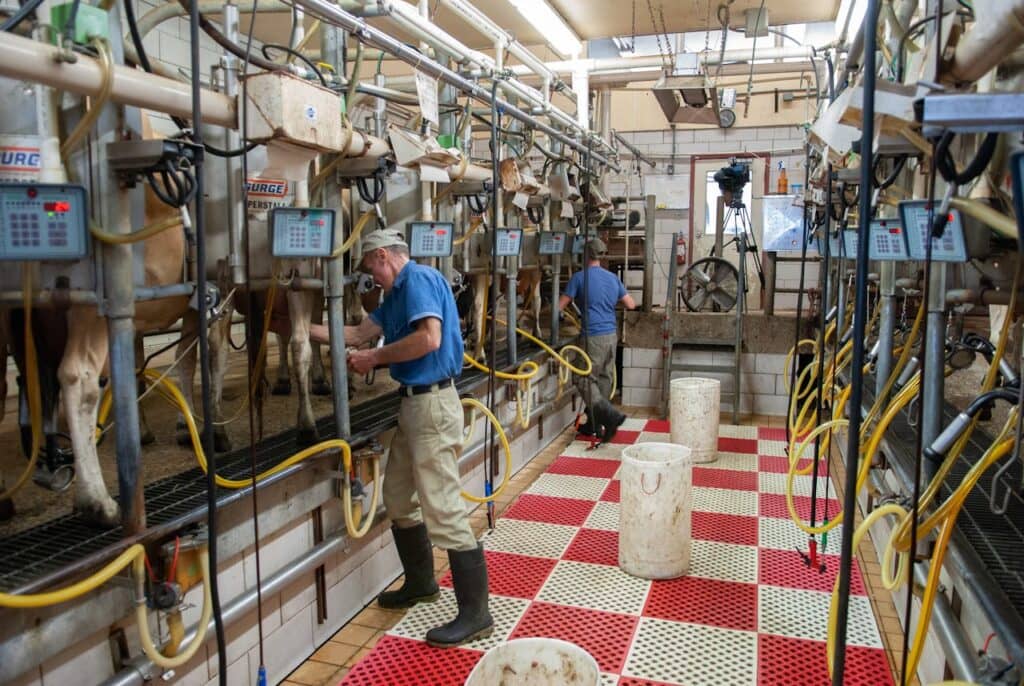Automation in agriculture is the future. The advantages are numerous and the modern farmer or gardener can harness them all and grow big in a short time while maximizing profits and minimizing risks or loses
Contents
What is agriculture automation and modernisation
Automation is the process of letting things get done almost by themselves while putting in less effort. This allows the farmer to prioritize other tasks, work efficiently and effectively. Who wouldn’t like to sit back and get some free time while getting the work done at the same time?
Long-ago humans used to do every single bit of work themselves: mailers used to travel thousands of miles to deliver mail on horses which would take months, businesses, and daily farm activities required 100% constant human labor which is no longer the case today thanks to the rise of technology and machines.
You may be having a farm and you sell produce or you may be having an agricultural-related enterprise that would require labor and time to get things done and meet business goals. With automation, the process can be streamlined and done efficiently along the vertical and horizontal lines of production. Different units can also be run at the same time.
There are a lot of machines today that can handle different day-to-day farm activities like milking, planting, weeding, harvesting, irrigation, and spraying. Automatic water supply, irrigation, feeding, and cleaning systems can also be incorporated into agricultural systems to get the work done at set intervals.
The internet of things is also used in climate-smart agriculture and modern farming systems. Here, a range of interlinked farm devices and robotics are controlled at one central unit or tablet and linked via a network or the internet. These devices can include;
- Temperature thermostats
- Lighting devices
- Wind sensors
- GIS devices
- Perimeter and burglar proofing sensors/alarms
- Water quality monitors
- Electric irrigation pumps
- Fire alarm systems
- Automatic irrigators
- Drones; for spraying
- Agricultural robotics
- Self-driving and operating agricultural machinery.. etc
There is a large amount of software today that can handle different day-to-day agribusiness activities: like emails, accounting, and bookkeeping, advertising. Marketing agricultural products can also be done online through digital marketing.

Advantages of agriculture automation and modernisation
1.Saves time
Labor that would have been done by many people is done efficiently and effectively in the shortest time possible. This frees the farmer time to do other farm activities
2.Eases work
Machines do the work fast and easy peasy. At the tap of a button or a switch; a farmer can irrigate or spray crops, water animals, get environmental crop data, control all farm lights, and manage other parameters using machines in modern urban farming and agriculture.
3.Saves money
Money is saved on labor and other costs like security. It’s also easy to monitor and manage farm activities. Wastage is also reduced. Inputs from one unit can be efficiently utilized in another unit.
4.High yields and profits
As a result of increased efficiency and ease of work, farm yields and profits increase. Automated devices can also be used to monitor farm activities at a single point which data is used to foresee issues and avoid losses.
5.Possibility of growing on a large scale
Food and animal production can be done easily and efficiently on a large scale since most of the work can be automated. Large-scale production results in increased profits for the farmer.
6.Ability to serve a large market.
With large-scale production comes the ability to grow more and meet market demand both locally and internationally.
7.Possibility of growing a variety of crops and animals on the same piece of land
Agricultural automation and modernization allow for easy integrated crop and animal production on the same piece of land. Different units can be set up, controlled, and monitored together. Output from one system can easily be transferred and used in another system. Its also easy to control pests and diseases.
8.Smooth business activities
Agricultural automation and modernization allow a streamlined flow of farm activities, easing work while improving efficiency and effectiveness.

Disadvantages of agricultural Automation and modernization
1. Very expensive
Modern agricultural equipment ain’t cheap. Irrigation systems alone are very expensive and cannot be afforded by majority of the poor farmers. Besides most don’t exist in developing countries and importing them can also be very costly.
2.Lack of technical knowledge
Equipment may require some good technical knowledge and expertise which most farmers may not have.
3. Maintenance issues
To work properly, the equipment must be kept in pristine conditions. Regular routine checkups are required to make sure all equipment are working properly, no damages or blockages, and that replacements are done where need be. A technical person should always be a call away.
4. Increased power consumption
The equipment uses electricity to run which increases the power bill at the farm.
5. Possibility of entire shutdown
In cases the systems are interconnected and co-dependent, damage to one system can cause a shut down of the entire system. Results can also be affected especially when the problem wasn’t identified early enough and action is taken immediately.
conclusion
Agricultural automation and modernization are the future of agriculture. With the rise of world hunger, modern systems are needed to easy food production and efficiency so that the planet has enough food. It’s very expensive to start but it’s possible anywhere if you start small, incorporating one system at a time. Automation has great benefits to farm production if practiced in whatever form. Start today.

